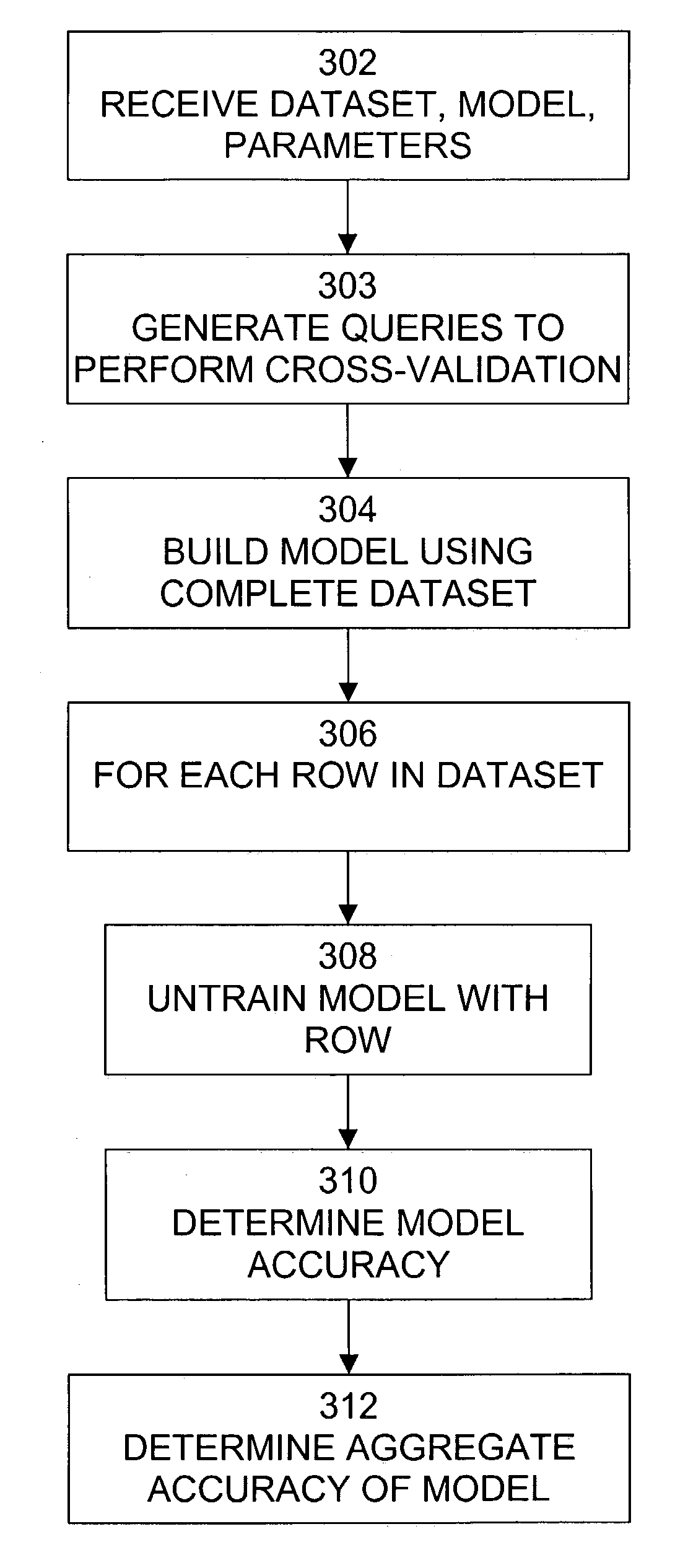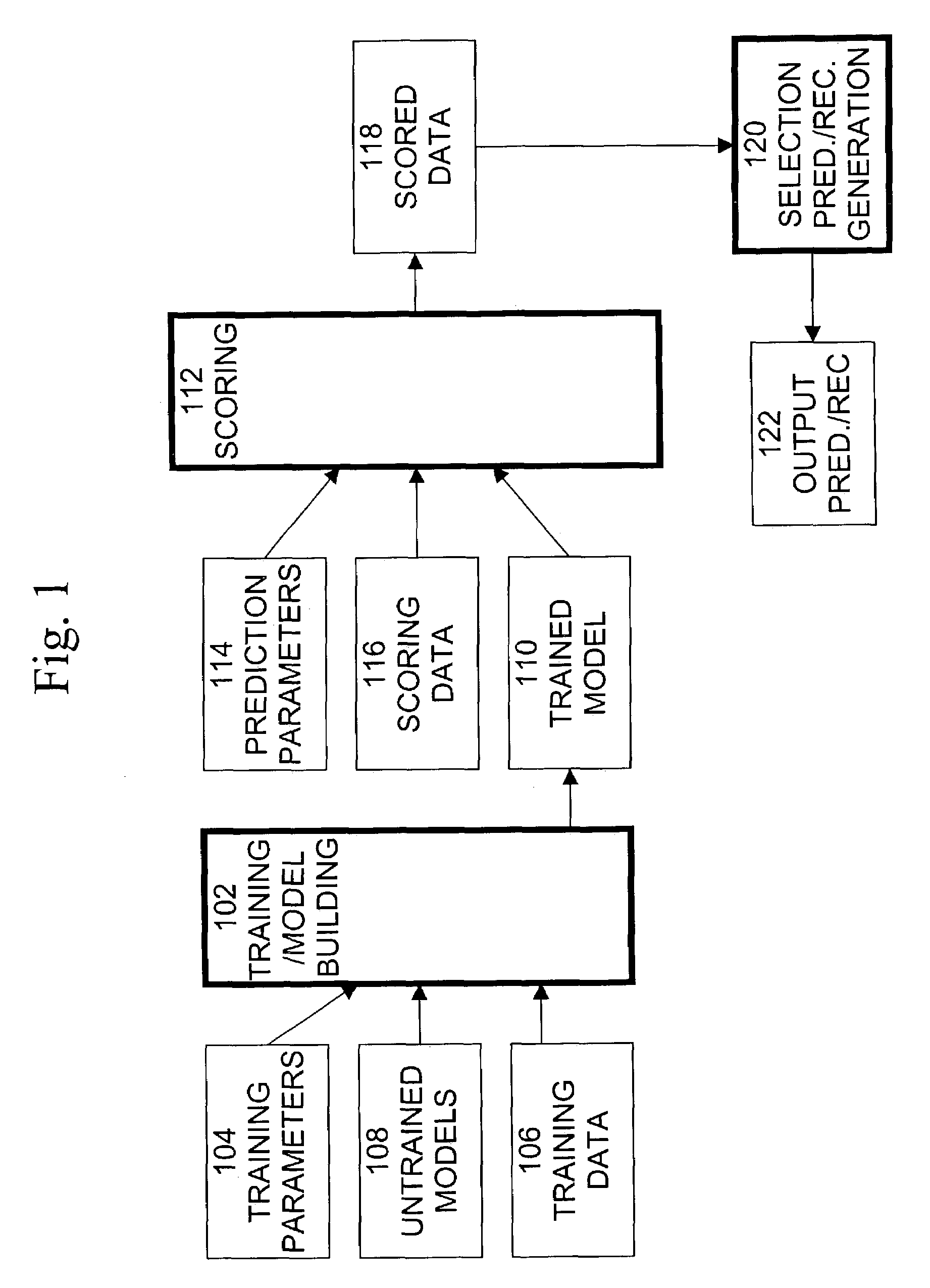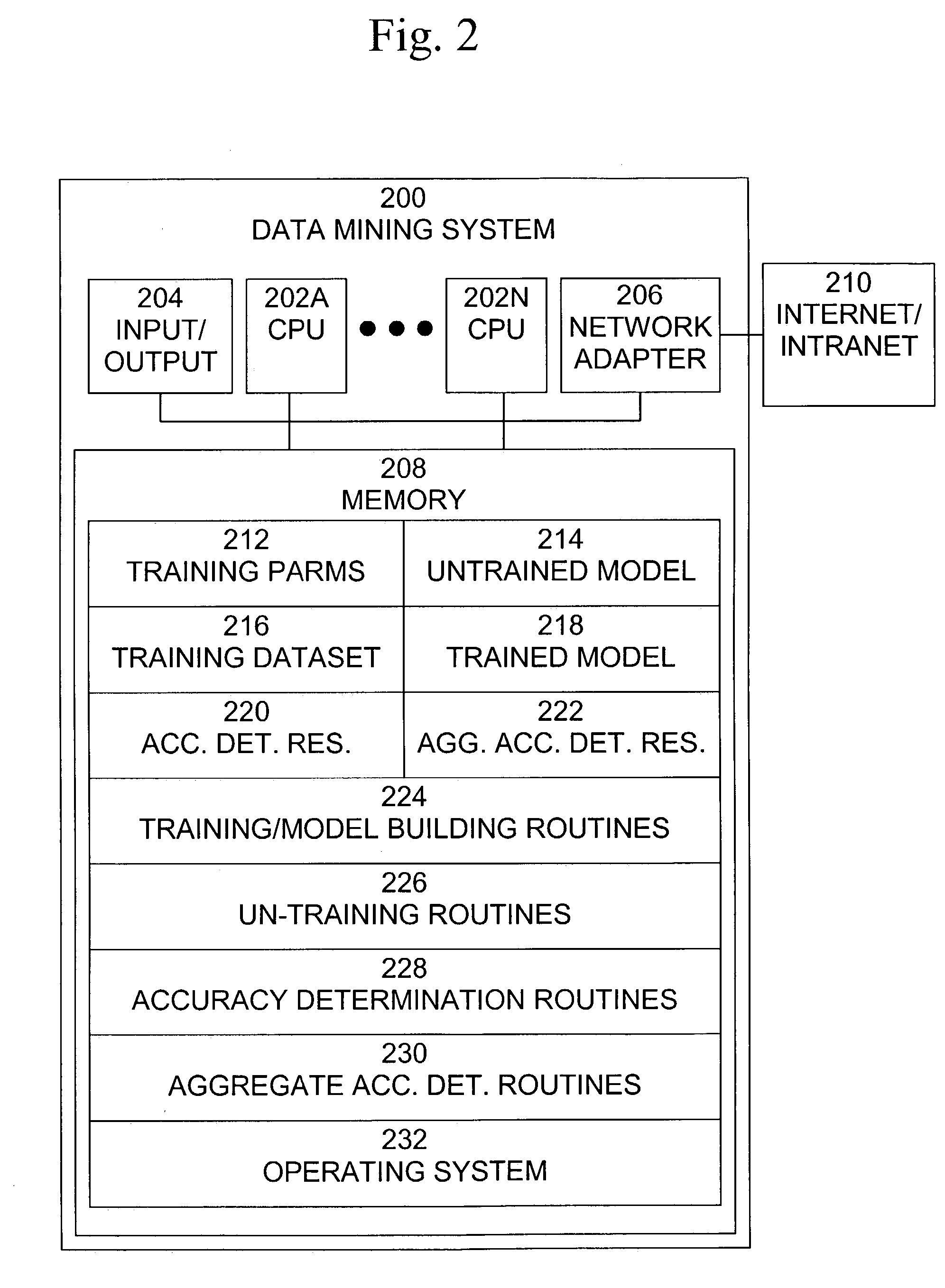Cross-validation for naive bayes data mining model
a predictive model and cross validation technology, applied in computing models, instruments, memory systems, etc., can solve problems such as excessive computational costs, and achieve the effect of reducing computational costs
- Summary
- Abstract
- Description
- Claims
- Application Information
AI Technical Summary
Benefits of technology
Problems solved by technology
Method used
Image
Examples
Embodiment Construction
[0016]An exemplary data flow diagram of a data mining process, including building and scoring of models and generation of predictions / recommendations, is shown in FIG. 1. The training / model building step 102 involves generating the models that are used to perform data mining recommendation and prediction. The inputs to training / model building step 102 include training parameters 104, training data 106, and untrained models 108. Untrained models 108 include algorithms that process the training data 106 in order to actually build the models. Training parameters 104 are parameters that are input to the data-mining model building algorithms to control how the algorithms build the models. Training data 106 is data that is input to the algorithms and which is used to actually build the models.
[0017]Training / model building step 102 invokes the data mining model building algorithms included in untrained models 108, initializes the algorithms using the training parameters 104, processes trai...
PUM
 Login to View More
Login to View More Abstract
Description
Claims
Application Information
 Login to View More
Login to View More - R&D
- Intellectual Property
- Life Sciences
- Materials
- Tech Scout
- Unparalleled Data Quality
- Higher Quality Content
- 60% Fewer Hallucinations
Browse by: Latest US Patents, China's latest patents, Technical Efficacy Thesaurus, Application Domain, Technology Topic, Popular Technical Reports.
© 2025 PatSnap. All rights reserved.Legal|Privacy policy|Modern Slavery Act Transparency Statement|Sitemap|About US| Contact US: help@patsnap.com



